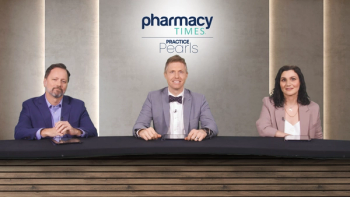
Comparing NATALEE and monarchE Trials
In her final discussion, Dr Moore analyzes key differences between the NATALEE and moncarchE trials.
Heather Moore, CPP, PharmD: When thinking about ribociclib and the NATALEE [NCT03701334] and how we compare that with our current landscape, thinking about abemaciclib in the adjuvant setting based off of the monarchE study [NCT03155997], what really differentiates these studies and where we’re going to use them is the inclusion criteria. NATALEE did allow for earlier-stage patients, so they did allow for T2N0 patients if they had grade 3 or grade 2 disease and an additional risk factor, whereas we didn’t see that within the monarchE data. For the monarchE data, that study only included patients who were node positive. Patients either had to have 4 or more positive lymph nodes, or 1 to 3 positive lymph nodes, and patients had to have either a Ki-67 [marker] of greater than or equal to 20%, a tumor size greater than 5 cm or grade 3 disease. Overall, looking at a much higher-risk patient population compared [with] what was seen in NATALEE.
The other things that are important are that when we compare ribociclib from NATALEE, it was 3 years of adjuvant therapy compared with only 2 years with monarchE. This is going to be a longer duration of therapy. But from an efficacy standpoint, we do have more mature data with monarchE. Looking at 4 years after from monarchE, they had an absolute invasive disease-free survival of roughly 6.4% favoring abemaciclib. What was really exciting about this is that this benefit was sustained even after completion of therapy. Those Kaplan-Meier curves just continued to separate, which is really exciting in that setting. Overall survival data are pending for monarchE. The other thing to really be mindful of are the toxicity profiles when we’re comparing these. Ribociclib on a daily basis is tolerated very well. We do have to be mindful of the myelosuppression as seen from the adverse event profile seen within NATALEE. But we also have to be mindful of the QTc prolongation. I’m thinking logistically and how we would implement this in the clinic, you would still have to be very mindful of the baseline, mid-cycle, and end-of-cycle [electrocardiograms] that are required. Logistically implementing that may be a little more difficult, as this would impact many more patients in the adjuvant setting.
Now, when thinking about abemaciclib, it is continuous dosing. We don’t see quite the level of myelosuppression, which is helpful, but we do have to be very mindful of the diarrhea. Thinking about the diarrhea that we know to be tachyphylactic and thinking about discontinuation rates that we saw within monarchE, that is something that could otherwise be limiting or something that could be helpful in making a decision between ribociclib vs other abemaciclib. Taking into effect the efficacy data as well as the toxicity profiles for both of these agents, some of this may be a patient decision.
Transcript is AI-generated and edited for clarity and readability.
Newsletter
Stay informed on drug updates, treatment guidelines, and pharmacy practice trends—subscribe to Pharmacy Times for weekly clinical insights.











































































































































































































